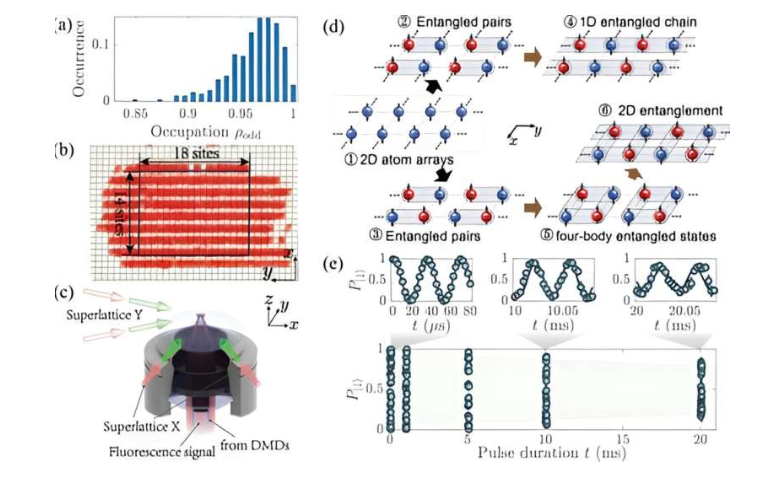Insider Brief
- USTC scientists, in collaboration with teams from Tsinghua University and Fudan University, achieved significant progress in scalable multipartite entangled states in quantum research.
- They utilized ultra-cold atoms in optical lattices to create multi-atom entangled states, leading to a milestone in quantum science published in Physical Review Letters.
- The research team’s innovative techniques have the potential to advance large-scale quantum computing and garnered recognition from the American Physical Society in Physics Magazine.
Scientists at the University of Science and Technology of China (USTC) under the Chinese Academy of Sciences (CAS), in partnership with a collaborative team from Tsinghua University, helmed by Ma Xiongfeng, as well as Fudan University, led by Zhou You, have made remarkable strides in the development and precise measurement of scalable multipartite entangled states. This collaborative effort has resulted in substantial breakthroughs in the realm of quantum entanglement preparation and measurement.
Utilizing ultra-cold atoms trapped in optical lattices, the group of researchers achieved a significant milestone in quantum science by proficiently crafting multi-atom entangled states. This accomplishment was realized through the meticulous creation of a two-dimensional atomic grid, followed by the generation of entangled atom qubit pairs and the systematic interconnection of these entangled pairs. The fruits of their labor have been formally documented and are now published in the esteemed journal, Physical Review Letters, marking a noteworthy contribution to the field of quantum physics.
In the realm of quantum research, the preparation, measurement and manipulation of large-scale entangled states hold paramount importance. Quantum entanglement, a fundamental phenomenon at the heart of quantum computing, unlocks exponential computational capabilities as the number of entangled qubits increases. This intricate pursuit has found an ideal playground in ultracold atomic qubits nestled within optical lattices, boasting impeccable coherence, scalability, and precision quantum control.

The journey toward this quantum milestone began with the dedicated efforts of the University of Science and Technology of China (USTC) research team. Since 2010, they have delved into the intricate realms of multibody phase transitions, atomic interactions, and entropy distribution dynamics within optical lattices. By the year 2020, their work bore fruit, achieving an astounding entanglement fidelity of 99.3% with an impressive array of over 1,000 pairs of entangled atoms.
These breakthroughs laid the foundation for enhancing atomic entanglement fidelity and parallel atomic control, setting the stage for the exploration of larger multi-atom entangled states and further advancements in quantum computing. However, past efforts faced formidable bottlenecks, including limited control over individual atomic qubits, significant phase shifts in optical lattices, and a lack of effective methods for detecting and controlling multi-atom entanglement states.
In response to these challenges, the dynamic research team, led by Pan Jianwei and Yuan Zhensheng, embarked on a journey of innovation and engineering. They developed a novel equal-arm, cross-beam interference, and spin-dependent superlattice system, integrated with self-developed single-lattice resolution technology, wide-band achromatic quantum gas microscopy, and an array of digital micromirrors for precise spot shape editing. This intricate setup unlocked the ability to conduct both multi-atom global parallel measurements and local single grid point control.
Their innovative approach resulted in a remarkable 99.2% filling rate of a two-dimensional atomic array. Moreover, they accomplished the preparation of entangled Bell states with an average fidelity of 95.6% and a lifespan of 2.2 seconds. Most impressively, they seamlessly connected adjacent entangled pairs, crafting a 10-atom one-dimensional entangled chain and an eight-atom two-dimensional entangled block.
This groundbreaking work signifies a monumental stride towards the realization of large-scale quantum computation and simulation using optical lattices, capturing the attention and commendation of the American Physical Society, which highlighted this achievement in a feature within Physics Magazine, aptly titled “Milestone for Optical-Lattice Quantum Computer.”
Featured image: Experimental setup and entanglement generation sketch. Credit: Physical Review Letters (2023). DOI: 10.1103/PhysRevLett.131.073401
For more market insights, check out our latest quantum computing news here.
















